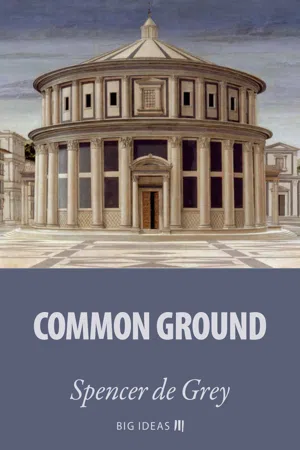![]()
PUBLIC REALM AND PUBLIC LIFE
The interplay between the public realm and public life is intimately intertwined. The most liveable and vibrant cities are those with a rich diversity of public spaces, ranging in scale and function. From the grand piazzas, such as London’s Trafalgar Square, that play host to political demonstrations and cultural spectacles, to the intimate pocket parks, such as New York’s Paley Park, that offer a cocoon of respite for office workers in Manhattan’s busy midtown. Common ground needs to accommodate the largeness of civic events as well as the smallness of everyday life.
One of the keys to creating successful public spaces is maintaining the balance between the needs of the pedestrian and the car. The democratisation of the car in the early 20th century paved the way for significant investments in vehicular infrastructure, resulting in highways cutting across cities, knotted intersections, and a carpet of car parks. Subsequently, cities have become congested and traffic has become a ubiquitous presence in any urban setting. However, it isn’t just a matter of simply getting rid of all car-based infrastructure. In fact, roads play an important role in the functioning of the city, from essential public services such as ambulances and fire trucks to ubiquitous white vans carrying goods. It is crucial to strike a balance between the infrastructural needs of the city and the vitality that pedestrian routes and pathways bring to the urban realm.
LONDON, TRAFALGAR SQUARE. THIS PANORAMA SHOWS HOW THE SQUARE HAS BEEN FREED FROM THE TRAFFIC CONGESTION THAT ONCE MADE IT INHOSPITABLE.
This approach is exhibited in our refurbishment of Trafalgar Square in London. Historically, the square has been the civic centrepiece of the city, but the nonstop tide of traffic had turned Nelson’s Column and the fountains into a traffic island, visited only by those willing to risk life and limb, and of course, pigeons. There was an obvious need, and support, for change. After consulting over 180 separate institutions and thousands of individuals, as well as forensically analysing the movement of people and vehicles in and around the square, we arrived at a solution that could reclaim the square for the public. The most significant move was the closure of the north side of the square to traffic and the creation of a broad new terrace, which forms an appropriate setting for the National Gallery and links it via a flight of new steps to the heart of the square and its fountains. Below the terrace, also accessible by lifts, a new café with outdoor seating provides a much-needed spot to rest and take in the sights.
After its successful revamp, Trafalgar Square regained its lustre and appeal. Post-occupancy studies show that the closure of the North Terrace has led to an acceptable delay for cars but eased the flow of public transport immeasurably. People have voted with their feet, and the square is now frequented by 13 times the number of pedestrians compared to earlier use.
What is more, the National Gallery reported a significant increase in visitor numbers. The square now hosts many annual events, including cultural celebrations, religious festivals, political rallies and commercial events. The diversity of these events reflects the diversity of Londoners, signalling an o...

